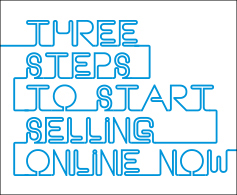Riding the O2O Wave: 4 practical ways to get it right
Ever heard these terms, and wondered what in the world they were?
Pick up from the store.
Click and collect.
Reserve and collect.
And more recently, BOPIS.
These are fulfillment options gaining popularity with stores and shoppers alike. They allow a shopper to buy online and then collect the purchase from the store. The options offer benefits to you – the retailer, as well as to the customer.
Customers get to choose a time convenient to them, doing away with the frustration of waiting for an order to get delivered and get to save on prices – since the delivery costs are not added to the final price.
Retailers get to save on logistics costs, drive up their in-store traffic – enabling them to create opportunities to cross-sell and up-sell products.
Add to this the fact that a recent study by Deloitte indicates that Omnichannel shoppers are poised to spend about 75 percent more than store-only shoppers in the coming future and click and collect begins to sound like the answer to all retail problems.
Who wouldn’t want to push up their sales, while driving down costs?
The ground reality, however, is something else, entirely.
Take, for example, the Cyber Monday sales as recent as late 2015 – Nearly 60% of all orders placed via ‘click and collect’ ran into issues. Problems faced were:
- Customer made an online payment, but during pick up the items bought were not in the store.
- Customer made an online payment, but during pick up the wrong items were present in-store.
- The customer had to wait in long queues to collect his/her purchase.
- During pick up, no staff member was available to sort issues.
Another report by StellaService, a company that studies customer service issues, found that 25 percent of click-and-collect orders placed in its holiday season tests had problems.
How can you mitigate these issues?
Seamlessly integrate your offline and online experiences:
To facilitate options such as inter-branch transfers, it is important that the information about the inventory of one store is available to the other stores.Your customers want an Omnichannel experience from your brand. For this, you need a way of managing and integrating your offline and online presence. A few retailers have tried doing this, but they failed.
Why? Because the systems already in place are not designed for Omnichannel retail and they do not solve the purpose of seamlessly managing the entire workflow.
What is needed is a system that helps the retailer sell online and across marketplaces, as well as a system that enables a real-time view of in-store inventory.
Make information available:
To facilitate options such as inter-branch transfers, it is important that the information about the inventory of one store is available to the other stores.
For example, if a customer makes a purchase and wishes to pick up their goods from a store which does not have the required stock, visibility of inventory held in other stores would help fulfill the customer’s order.
Ensure access to information:
The customers should have information about your inventory and your products. For example, if a customer looking to make a purchase knows what a product is and whether the product he is looking for is available at his desired location or not, he is more likely to buy.
Make your information consistent:
Consistent information is paramount.
Can you imagine what would happen if your data was inconsistent? Say your customer logs online and sees that you sell a phone with specs stating 13 MP camera and 3 GB RAM, and makes the purchase. However when she turns up to collect it in your store, the phone has, in reality, specs of 16 MP camera and 2 GB RAM. Not only would this mean bad customer experience, it would also bring bad publicity to your brand.
Bringing the Omnichannel experience to your customers is not easy. But with the right software handling your requirements, it does not have to be hard.
Vin eRetail O2O Suite provides Real-Time View of Inventory with Powerful Order Management functionality and ready integrations with web stores, marketplaces, and last-mile fulfillment companies.
Find out for yourself. Request a demo today!
Any tips or comments for us? Leave them in the comments below –
Read More

















